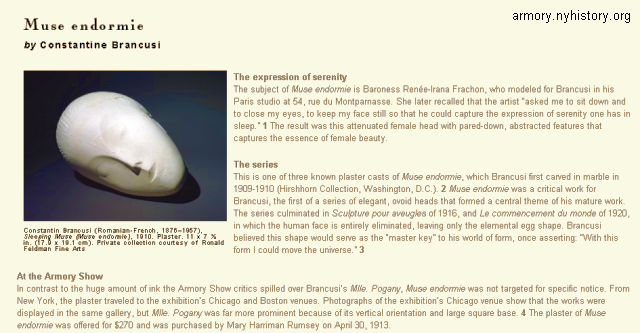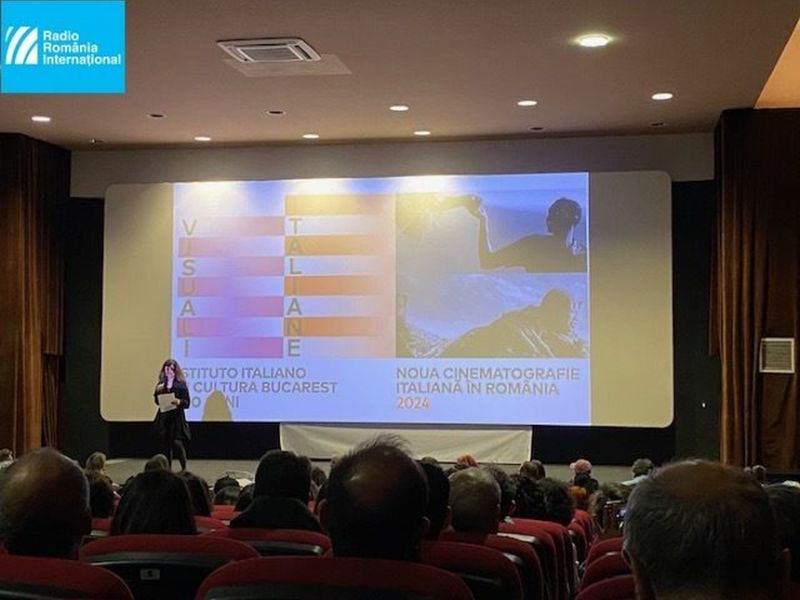Works by Constantin Brancusi exhibited in museums throughout the world
In the late 1913, the first works by Constantin Brancusi were displayed in the United States, at the International Modern Art Show in New York

România Internațional, 05.07.2014, 02:19
The five masterpieces Head, Mademoiselle Pogany II, Head of a Child, Sleeping Muse II and Fish. were acclaimed by the public, art critics and collectors alike. No wonder that most works by Constantin Brancusi are currently exhibited in museums and collections in the US. Collectively and individually, they testify to his signature style admired by New Yorkers since 1913, and exemplify a sophisticated expression of perfected simplicity. With these sculptures, Brancusi shattered the paradigm of abstraction in sculpture and radicalised the idea of purity in form. Simply stated in the words of Jérôme Neutres, “Brancusi changed the way art was made.”
Art critic Catalin Davidescu: “Most of Constantin Brancusi’s sculptures are displayed in New York, at the Museum of Modern Art and The Gugenheim Museum. There are also famous museums in Pennsylvania, Atlanta, and Philadelphia where the Romanian sculptor’s works are exhibited. Then there are university museums, such as the one in Berkeley, that own sculptures by Constantin Brancusi. Of course, some of Brancusi’s masterpieces can also be found in Europe. In Paris there is the George Pompidu Museum of Modern Art that hosts Brancusi’s atelier, several museums in England, such as the Tate Gallery and the Modern Art Gallery at the Oxford Museum. The Kunsthalle Museum of Zurich is another example. In Romania there are only two museums where works by Constantin Brancusi are on display: The National Museum of Art, in the capital city Bucharest and the Art Museum in Craiova. The museum in the capital city has 11 sculptures on display, while one of Brancusi’s most important works, The Kiss, can be admired in Craiova, alongside another five works by the same author. There is also one of his earliest works, a masterfully rendered ecorche – a statue of a man with skin removed to reveal the muscles underneath, a jewellery box and a chair sculpted while a student at the Bucharest School of Fine Arts.”
Many of the works created by Brancusi had a troubled history, as Catalin Davidescu has pointed out:
Catalin Davidescu: “I must say that it was the Americans who truly discovered Brancusi due to the famous trial with the American customs in which he was accused of shipping metal to the US. The piece of metal in question was in fact a work of art. Brancusi became famous as a result of this trial and his works started selling in the US, and his European fame came much later. His works only started being sold for huge sums of money, for tens of millions of euros, in the second part of the 20th century, even towards the end of the century and the beginning of the 21st century. Unfortunately, although he was very fond of both Romania and France, these countries did not promote his work very strongly. Starting with the Armory Show and the start of the 20th century, his work was mainly promoted in the United States and it was only later that he started making an international reputation.”
Some of Brancusi’s sculptures have been recovered in very special circumstances, says art critic Catalin Davidescu:
Catalin Davidescu: “I am familiar with the story behind the recovery of Vitellius, a work created by Brancusi while he was a student of the Fine Arts Schools in Bucharest. The sculpture was found after 1944 in Dolj Prefecture building’s attic by a Romanian expert in Brancusi’s art, namely Vasile Georgescu Paleolog, the one who wrote the first monograph about Constantin Brancusi. He is the one who talks in his monograph about the works in Craiova, namely the Kiss”, two heads of a child and The Thigh”, which are now at the Art Museum in Craiova. They were found in Ostroveni commune, in the house of land owner Victor Popp, a collector and friend of Brancusi’s. In 1949, after nationalization, his properties were seized by the communists and Brancusi’s works were later found by those who established the farming cooperative in that house. The Kiss”, for instance, was used to hold down the lid of a sauerkraut barrel. Recovering those pieces was not hard, because the president of the cooperative had no idea they were works of art. As V.G. Paleologs says in his memoirs, Ego” and Head of a Boy” were found somewhere on the mansions’ terrace, near some grapes left to dry.”
It is a well-known fact that to sculptor Constantin Brancusi home was the world entire, just like his works are now spread all across the globe. Wherever I look I see Brancusi’s power and influence. He still is the most modern of the modern sculptors” said Pal Kasmin, whose gallery hosted last year the exhibition called Brancusi in New York 1913 — 2013”





























